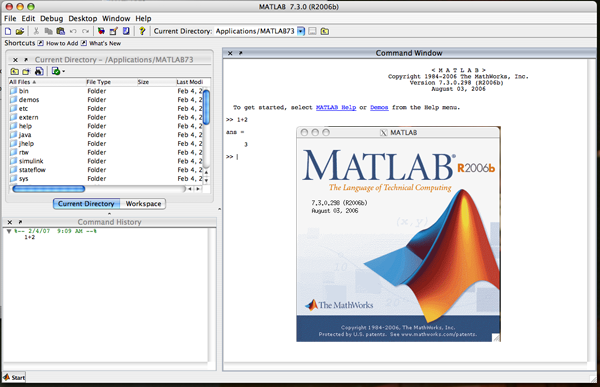As the first step, the various commonly used functions are discussed briefly. After that programs are given.
buttord
This functiion returns the order and natural cut-off frequency of the butterworth filter. Its input are passband freq, stopband freq, passband attenuation and stoopband attenuation. The freq must be normalised.
[N,Wn] = buttord(omp,oms,alphap,alphas);
N is the order, Wn is the cut-off.
butter
This is used to get the system function. The numeratoe and denomiantor values are obtained in an array.
[B,A] = butter(N,Wn);
abs
This gives the absolute value of a complex quantity.
m = abs(X);
angle
This will return the phase angle associated with a complex quantity.
an = angle(X);
subplot
This function is very commonly used one. It working can be described through an example.
subplot(3,1,1) means the entire window is divided into a 3X1 matrix and the active portion at the present time is the first one.
plot
It performs the plotting function of qnty. vs other.
plot(Y,X) plots Y as function of X. ie, Y on y axis and X on xaxis.
grid
It will draw grid lines to the plot.
Lowpass Filter
%To design a Butterworth Lowpass Filter
%specifications
clear all
alphap = 4; %Passband Attenuation
alphas = 30; %Stopband attenuation
fp = 400; %Passband frequency in Hz
fs = 800; %Stopband frequency in Hz
F = 2000; %Sampling Frequency in Hz
omp = 2*fp/F;
oms = 2*fs/F;
%To find cut-off frequency and order of filter
[N,Wn] = buttord(omp,oms,alphap,alphas); %N is the order of filter, and Wn is its natural frequency
%System function of filter
[B,A] = butter(N,Wn);
w = 0:0.01:pi;
[h,om] = freqz(B,A,w,'whole'); %h is the complex value of filter corres. to freq w
m = abs(h); %Absolute value of h
an = angle(h); %Angle of h
subplot(2,1,1);
plot(om/pi,20*log(m));
grid;
xlabel('Normalised frequency');
ylabel('Gain in dB');
subplot(2,1,2);
plot(om/pi,an);
grid;
xlabel('Normalised frequency');
ylabel('Phase in radian');
Bandpass Filter
%To design a Butterworth Bandpass Filter
%Specifications
clear all
alphap = 2; %Passband Attenuation
alphas = 20; %Stopband Attenuation
wp = [0.2*pi,0.4*pi]; %Passband Frequency
ws = [0.1*pi,0.5*pi];
%to find cut-off frq and order
[n,wn] = buttord(wp/pi,ws/pi,alphap,alphas);
%System function
[b,a] = butter(n,wn);
w = 0:0.01:pi;
[h,ph] = freqz(b,a,w);
m = 20*log10(abs(h));
an = angle(h);
subplot(2,1,1);
plot(ph/pi,m);
grid;
ylabel('Gain in dB');
xlabel('Normalised Frequency');
subplot(2,1,2);
plot(ph/pi,an);
grid;
ylabel('Phase in radian');
xlabel('Normalised frequency');
Bandreject Filter
%To design a Butterworth bandreject filter
%Specification
clear all
alphap = 2; %Passband attenuation
alphas = 20; %Stopband attenuation
ws = [0.2*pi,0.4*pi]; %Stopband frequency in rad/s
wp = [0.1*pi,0.5*pi]; %Passband frequency in rad/s
%To find cut-off frequency and order
[n,wn] = buttord(wp/pi,ws/pi,alphap,alphas);
%To find system function
[b,a] = butter(n,wn,'stop'); %[b,a] is [numerator,denominator]
w = 0:0.01:pi;
[h,ph] = freqz(b,a,w);
m = 20*log(abs(h));
an = angle(h);
%Plotting
subplot(2,1,1);
plot(ph/pi,m,'r');
grid;
ylabel('Gain in dB');
xlabel('Normalised frequency');
subplot(2,1,2);
plot(ph/pi,an,'b');
grid;
ylabel('Phase in rad');
xlabel('Normalised frequency');
Highpass Filter
%To design a Highpass Butterworth filter
%Specification
clear all
alphap = 4; %Passband attenuation
alphas = 30; %Stopband attenuation
fs = 400; %Stopband frequency in Hz
fp = 800; %Passband frequency
F = 2000;
omp = 2*fp/F; %Normalised
oms = 2*fs/F; %Normalised
%To find cut-off and order
[n,wn] = buttord(omp,oms,alphap,alphas)
%System function
[b,a] = butter(n,wn,'high');
w = 0:0.01:pi;
[h,om] = freqz(b,a,w);
m = 20*log(abs(h));
an = angle(h);
%Plotting
subplot(2,1,1);
plot(om/pi,m);
grid;
ylabel('Gain in db');
xlabel('Normalised frequency');
subplot(2,1,2);
plot(om/pi,an);
grid;
ylabel('Phase in rad');
xlabel('Normalised frequency');
querrymail@gmail.com
Saturday, 29 November 2008
Butteworth Filter Design
0 comments Posted by Sukunath B A at 11/29/2008 10:44:00 am
Labels: matlab
Saturday, 22 November 2008
MATLAB Overview
 Matlab is a commercial "Matrix Laboratory" package which operates as an interactive programming environment. Matlab is well adapted to numerical experiments since the underlying algorithms for Matlab's builtin functions and supplied m-files are based on the standard libraries LINPACK and EISPACK.
Matlab is a commercial "Matrix Laboratory" package which operates as an interactive programming environment. Matlab is well adapted to numerical experiments since the underlying algorithms for Matlab's builtin functions and supplied m-files are based on the standard libraries LINPACK and EISPACK.
Matlab program and script files always have filenames ending with ".m". The programming language is straightforward since almost every data object is assumed to be an array. Graphical output is available to supplement numerical results.
Online help is available from the Matlab prompt (a double arrow), both generally (listing all available commands):
[a long list of help topics follows]
and for specific commands:
[a help message on the fft function follows].
or by typing
to the Matlab prompt.
To get Hilbert Matrix
Tip: A magic square is a square matrix which has equal sums along all its rows and columns. Matrix multiplication is used to check this property.
Some standard matrices from linear algebra :
zeros(4,7)
ones(5)
[1, 2, 3; 4, 5, 6; 7, 8, 9]
querrymail@gmail.com
0 comments Posted by Sukunath B A at 11/22/2008 08:31:00 am
Labels: matlab
Thursday, 20 November 2008
BASIC MATLAB PROGRAMS
1. SINUSOIDAL SIGNALS
%program starts.
a=input("Enter amplitude=");
f=input("Enter frequency=");
t=0:0.01:1
y=a*sin(2*pi*f*t);
plot(t,y) %gives analog plot
xlabel("TIME");
ylabel("AMPLITUDE");
title("SINE WAVE");
2. RAMP SIGNAL
%program starts
n=input("Enter the Length of Sequence=");
t=0:1:n
stem(t,t) %gives discrete plot
xlabel("TIME");
ylabel(AMPLITUDE");
titile("DISCRETE RAMP SIGNAL");
3. SINE & COSINE WAVEFORMS IN A SINGLE PLOT
%program starts.
a=input("Enter amplitude=");
f=input("Enter frequency=");
t=0:0.01:1
y=a*sin(2*pi*f*t);
z=a*cos(2*pi*f*t);
plot(t,y,z) %gives analog plot of sin & cos in single graph
xlabel("TIME");
ylabel("AMPLITUDE");
title("SINE AND COSINE WAVE");
4. SQUARE WAVE
a=input("Enter amplitude=");
f=input("Enter frequency=");
t=0:0.01:1
y=a*square(2*pi*f*t);
plot(t,y) %gives analog plot
xlabel("TIME");
ylabel("AMPLITUDE");
title("SQUARE WAVE");
5. UNIT STEP AND UNIT IMPULSE FUNCTION AS SUBPLOTS
%subplot means different functions are shown on a single window
%as different graphs.
%subplot(x1,x2,p) means the window is divided into an x1 X x2 matrix.
%and the function is plotted on pth subplot
a=input("Enter amplitude=");
t=-2:1:a-1
y=[zeros(1,2),ones(1,a)];
z=[zer0s(1,20,ones(1,1),zeros(1,a)];
subplot(2,1,1)
stem(t,y)
xlabel("TIME");
ylabel("AMPLITUDE");
title("UNIT STEP SEQUENCE");
subplot(2,1,2)
stem(t,z)
xlabel("TIME");
ylabel("AMPLITUDE");
title("UNIT IMPLUSE SEQUENCE");
querrymail@gmail.com
2 comments Posted by Sukunath B A at 11/20/2008 06:36:00 pm
Labels: matlab
